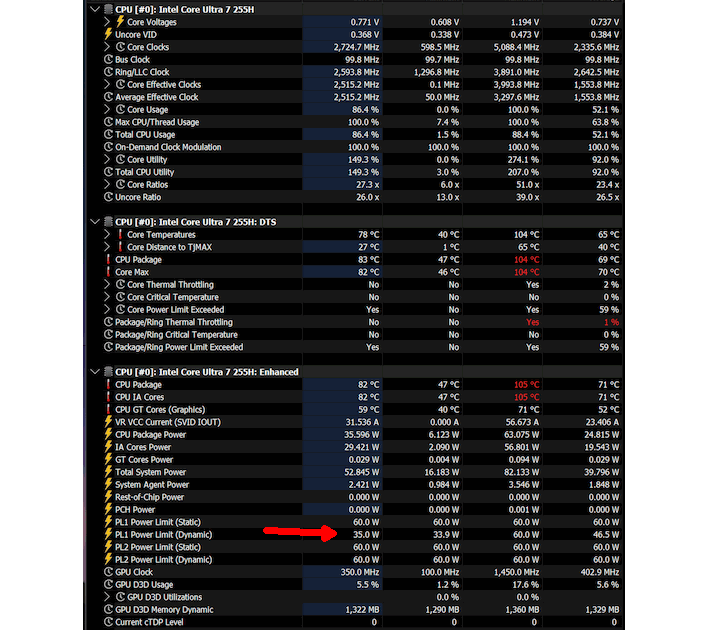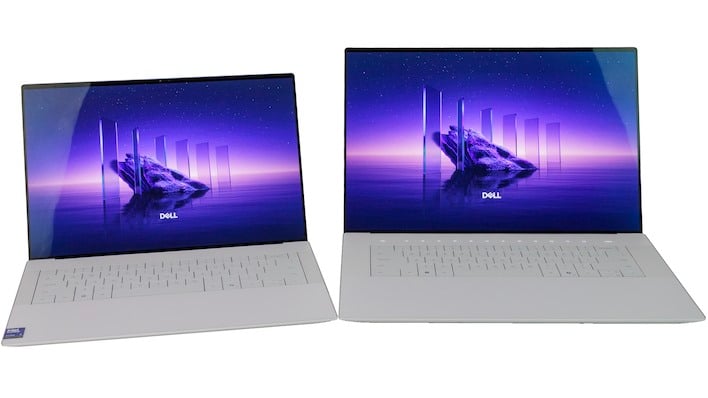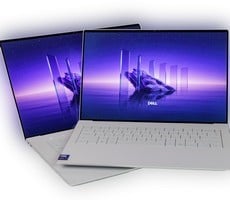Dell 14 And 16 Premium Laptops Reviewed: Supermodels In Every Way
Thin and light laptops almost always have compromised thermals because there's simply not enough mass on board to wick heat away from silicon to then exhaust it out of the chassis. Is this the case with Dell's new Premium laptops? Well, yes and no.
Dell 14 Premium Thermal Solution Performance
Unsurprisingly, the smaller of these two machines has more thermal issues than the larger 16-inch Dell Premium machine, but they're not as limited in that regard as you might think. The CPU can and will overheat and throttle, as its configured short-term power limit is 60W, which means that in brief moments when it spikes to nearly 5 GHz, it can easily slam into its 105°C thermal ceiling and begin throttling. However, this actually isn't the main reason the chip throttles.Instead, it's because Dell has configured the system such that the dynamic power limit drops to just 35 watts under sustained loads. This does have the effect of preventing the chip from overheating, even considering how underpowered the cooling solution is. However, it also limits clock rates to around 2.5 GHz, which comes at the expense of multi-core performance.

Dell 14 Premium noise results after 35 minutes of stress testing.
Ultimately we like this solution better than letting a CPU cook. If you're going to build a 14" laptop that's barely a half-inch thick and you're not using fancy vapor chamber cooling or liquid metal TIM, you have to compromise somewhere; the power limit is a reasonable place to do so. As a consequence, the fans remain relatively sedate, with our 35 minute test producing an average noise level of 43.4 decibels, which is only slightly audible. Even the maximum of 48.2 decibels is pretty sedate.
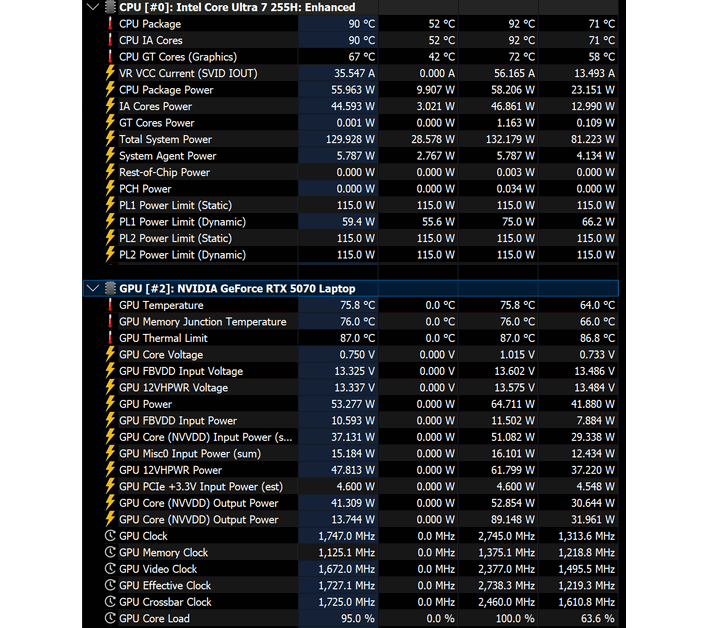
Dell 16 Premium power and thermal results during gaming.
Dell 16 Premium Thermal Solution Performance
The situation on the Dell 16 Premium is an entirely different matter. You see, when you equip the system with the GeForce RTX 5070, it in fact does get a vapor chamber cooler as part of the bundle, which is what allows it to dissipate 80 watts in such a tiny surface area. Now, even 80 watts is pretty meager for the class of hardware we have in this system, but Dell is once again quite conservative with the power limits. As you saw on the previous page, it doesn't exactly cripple performance, but we're not completely convinced that this system produces the performance we'd expect of "Core Ultra 7" and "RTX 5070" in every scenario. Still, at least it doesn't overheat.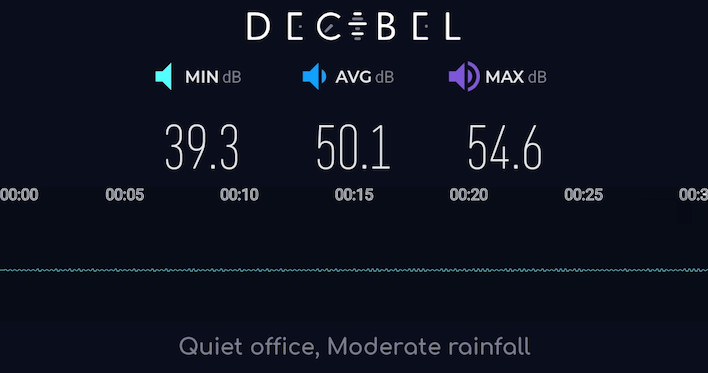
Dell 16 Premium noise results after 30 minutes of intense game testing.
The Dell 16 Premium is definitely rowdier than its smaller sibling, but that's sort of like saying a waiting room is noisier than a library. Neither is loud, and the character of the exhaust from the Dell 16 Premium is almost pleasant; more like a desk fan than the whiny laptop coolers of yore. Kudos to Dell's chassis designers for that one.
Dell 14 Premium And Dell 16 Premium Battery Life Benchmarks
Both of these laptops have absolutely massive batteries for this size class. The Dell 14 Premium has a 70-Whr battery, which is huge for such a slim machine. Meanwhile, the Dell 16 Premium comes with a 99.5-Whr pack. That's essentially the legal limit for laptop batteries, as the United States Federal Aviation Administration mandates that you can't bring a battery bigger than 99.9 Whr on a plane.With such big batteries, the battery life should be fantastic, right? Well, about that...
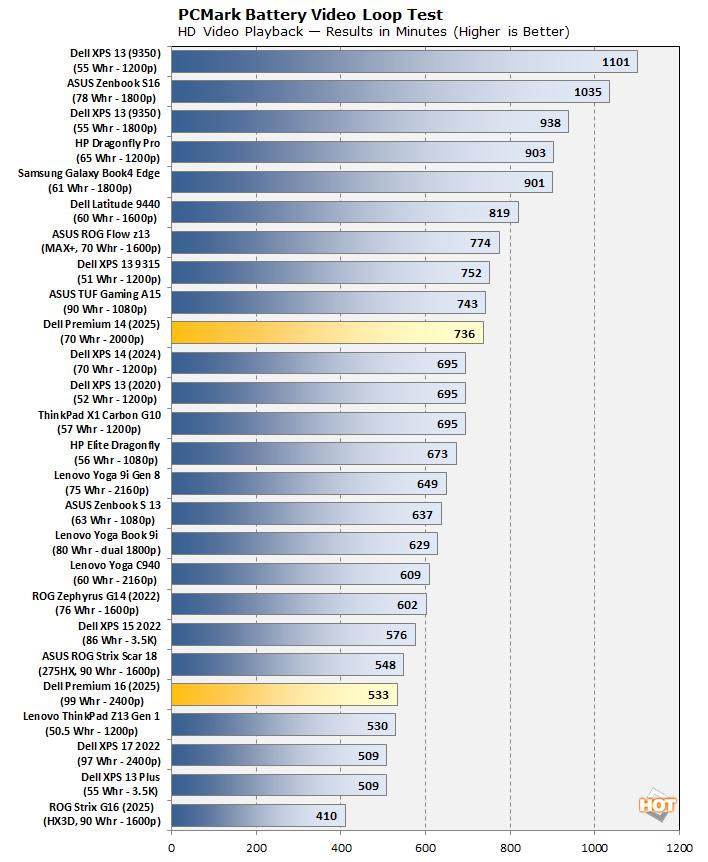
The Dell Premium 14 does well enough, coming in just behind the ASUS ROG Flow z13 with the same size battery. That system has a faster CPU and a faster GPU, but what it doesn't have is a thirsty-but-gorgeous HDR OLED display. The Dell Premium machines do, and that over-nine-megapixel OLED in the 16 Premium is probably why the 16-inch Dell machine turns in a very middling battery life result.(We've cropped many gaming systems off the bottom of this ranking.) Let's check the ratio chart to see how they do relative to their battery size.

Not great, although it's worth noting that both machines actually turned in almost exactly the results that Dell promised in its reviewer's guide. As such, this actually isn't a surprise, and both machines are performing exactly as designed. It's critical to keep context here; the Dell 16 Premium gave us nearly nine full hours of video watch time, while the Dell 14 Premium offered over twelve hours. This is with moderate brightness settings on the display, however, so if you're cranking up the brightness battery life is going to degrade some. Still, it's a long damn time.
What about gaming battery life? That picture was surprisingly good, actually.

Both machines turned in impressive results in this test. The Dell 16 Premium ran for a full two and a half hours, which isn't bad at all, considering the workload: 3DMark Fire Strike. If you were playing something like Balatro or Dead Cells, you might be able to pull another hour or two out of these machines. The Dell 14 Premium didn't run quite as long, but its little GeForce RTX 4050 has to work quite a bit harder than the RTX 5070 in the 16" machine to render the framerate-limited gaming test. Combine that with the smaller battery, and that's probably why we see a bit shorter play time. It's still over two hours, which is completely acceptable for a heavier-duty gaming scenario.
Dell's New Premium Laptops Are Beautiful But Not For Everyone
What we have here are aesthetics-focused notebooks with reasonable performance but limited upgradeability, which is common for laptops in this weight class. The user experience with both machines is promising, thanks to gorgeous displays, great sound systems, stylish designs, and Intel's Arrow Lake CPU platform. It's only once you start to dig in with these machines that you may start to encounter some frustrations. First and foremost on our list are the capacitive function buttons, which are a divisive design choice. If a user is accustomed to standard markings and tactility for the trackpad area, they might find Dell's invisible trackpad frustrating, too. Neither of these issues ruin the value proposition of these laptops, but they may be frustrating for some.Then you come to the issue of the relatively limited I/O. Dell is by no means alone in this, but just be aware that you only have Thunderbolt Type-C ports (and a MicroSD slot) to work with on these two machines. Frankly, we'd complain less if there was an an I/O adapter in the box, like Dell used to supply with its previous-gen XPS machines.
Regardless, for users who primarily consume or create content and occasionally work in Office tasks, these laptops are powerful tools, and they look fantastic with their smooth aluminum chassis and bright, beautiful, OLED InfinityEdge low-blue-light displays.
As with anything we review here, we have to consider pricing as well. Dell tells us that the 14" Premium system will start at $1499 with just integrated graphics, less memory, and less storage. The configuration we've reviewed today will start at $2099 as an introductory price, but the final retail price just showed up at Dell.com for $2249. Similarly, the 16" Premium system we've reviewed today will start at $2799 as an introductory price, with final retail being $3199. The base price for the 16-inch machine is a more palatable $1549, however. Regardless, that's a lot of money for a luxurious laptop, but those who will be enticed by the rich system build quality and materials, and the general performance on tap here, will likely not flinch at the price. Folks who are more value-conscious may want to consider a laptop that is targeted at more midrange, mainstream use cases, like Dell's 14 Plus or 16 Plus series.


